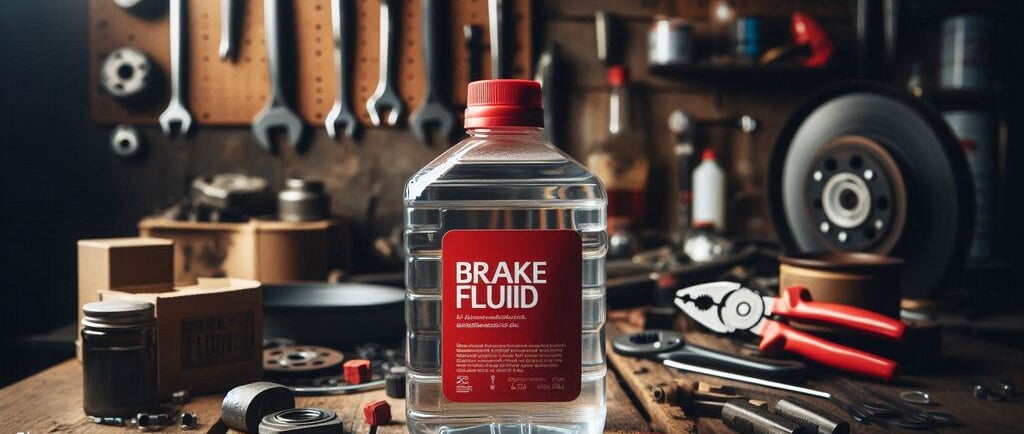Brake Fluid
When it comes to vehicle safety, the first components that come to mind are often the brakes, tires, and engine.
BRAKING SYSTEMS
11/14/20244 min read


Brake Fluid: The Unsung Hero of Your Vehicle’s Safety
When it comes to vehicle safety, the first components that come to mind are often the brakes, tires, and engine. However, there’s one essential element that keeps the braking system functioning properly—brake fluid. This crucial liquid is often overlooked but plays a significant role in ensuring your vehicle stops when you need it to. In this article, we’ll explain what brake fluid is, why it’s so important, the different types, and how to maintain it.
What is Brake Fluid?
At its core, brake fluid is a specially formulated hydraulic fluid used in the braking system of vehicles. It is responsible for transmitting force from the brake pedal to the brake components (such as the brake pads or shoes) via the brake lines. When you press the brake pedal, the brake fluid flows through the system and applies pressure to stop the vehicle.
Unlike other vehicle fluids, brake fluid isn’t just a lubricant or coolant. It is designed to withstand high pressure, extreme temperatures, and keep the braking system running smoothly. Without the right amount of brake fluid or proper maintenance, your vehicle’s braking efficiency can decrease, or worse, fail entirely.
Why Brake Fluid Matters
Brake fluid is the lifeblood of the braking system, and here's why it’s crucial:
Transfers Force: It transfers the force generated by pressing the brake pedal into hydraulic force, which moves the brake pads or shoes against the brake rotor or drum.
Prevents Corrosion: Brake fluid helps prevent rust and corrosion in your brake lines, ensuring that the system remains intact and functional.
Absorbs Heat: Braking generates heat, and brake fluid is designed to absorb this heat, preventing the system from overheating. The higher the boiling point of the fluid, the better it can handle intense braking conditions.
Types of Brake Fluid
Not all brake fluids are created equal. There are different types, each suited to particular vehicle systems. Let’s break them down:
1. DOT Brake Fluid (Department of Transportation)
This is the most common type of brake fluid found in modern vehicles. There are several grades of DOT fluid, including DOT 3, DOT 4, DOT 5, and DOT 5.1. Each type has different properties and is suited to different vehicles.
DOT 3: Common in older vehicles, it’s made of glycol-based fluid and has a lower boiling point. It’s less expensive but requires more frequent replacement.
DOT 4: Often found in newer vehicles, it has a higher boiling point than DOT 3, making it more suited for high-performance braking systems.
DOT 5: This is a silicone-based fluid and is used in specialized vehicles, such as motorcycles or off-road vehicles. It doesn’t absorb water, making it ideal for certain conditions, though it’s not compatible with glycol-based fluids.
DOT 5.1: This is similar to DOT 4 but has a higher boiling point, making it ideal for performance cars and heavy-duty vehicles.
2. Mineral Oil Brake Fluid
Used in some European vehicles, mineral oil-based brake fluids are less common in the U.S. These fluids are not hydroscopic (they don’t absorb moisture), which can reduce the risk of contamination in the braking system.
3. Synthetic Brake Fluid
Synthetic brake fluids are made to provide better performance in extreme conditions. They are designed to operate in high temperatures, making them suitable for vehicles that see heavy or performance use, like race cars or trucks.
How to Maintain Brake Fluid
Regular maintenance of your brake fluid ensures that your braking system operates at peak performance. Here are some tips to keep your brake fluid in top shape:
1. Check Brake Fluid Levels
Your brake fluid reservoir is usually located near the back of the engine bay. Checking your fluid levels is easy, and it’s an important part of your vehicle’s regular maintenance. If the brake fluid is low, it could indicate a leak or excessive wear in the system.
2. Flush and Replace Brake Fluid
Brake fluid doesn’t last forever. Over time, it can absorb moisture from the air, which lowers its boiling point and can lead to brake failure. The moisture can also cause corrosion in the braking system. Therefore, it’s important to flush and replace the brake fluid every 2-3 years or as recommended by the vehicle manufacturer.
3. Look for Warning Signs
If you experience any of the following, it may be time to check or replace your brake fluid:
Soft or spongy brake pedal: If the pedal feels soft or sinks when you press it, it could be a sign of air in the brake lines or low brake fluid.
Brake warning light: A lit warning light could indicate that your brake fluid is low or there’s an issue with the braking system.
Squeaking or grinding noise: If you hear unusual sounds when braking, it could be a sign of worn brake pads, or low brake fluid.
Signs You Need Brake Fluid Maintenance
Knowing when to replace or top off your brake fluid is crucial for safety. Some common signs to look for include:
Brake Fluid Leaks: Any visible fluid under your vehicle or a decrease in fluid levels could indicate a leak in the brake lines or master cylinder.
Unresponsive Brakes: If your car takes longer to stop or the brake pedal feels different than usual, you may need to check the brake fluid.
Conclusion: Keep Your Brake Fluid in Check for Safety
Brake fluid is an essential component of your vehicle’s braking system that ensures your safety on the road. Regular maintenance, such as checking fluid levels, flushing the fluid, and replacing it as needed, can prolong the life of your brake system and enhance its performance. Pay attention to the signs of low or dirty brake fluid, and don’t hesitate to take your vehicle to a professional mechanic when in doubt.



